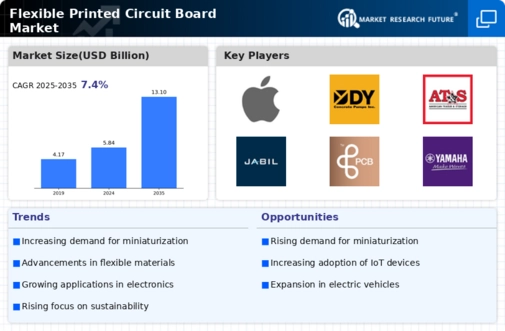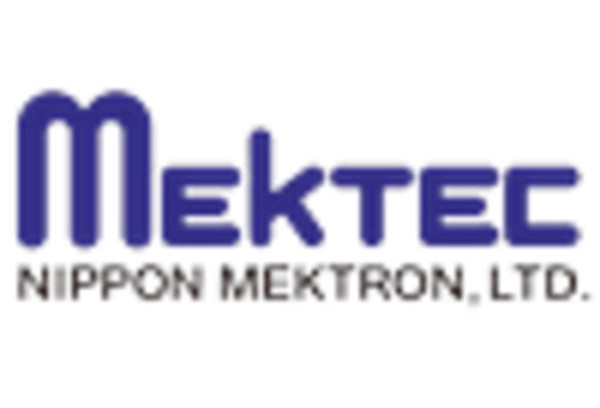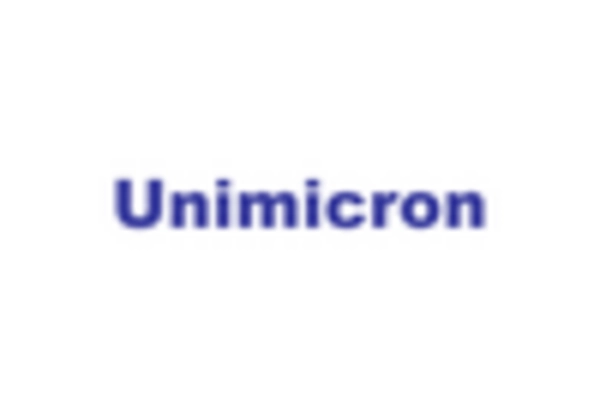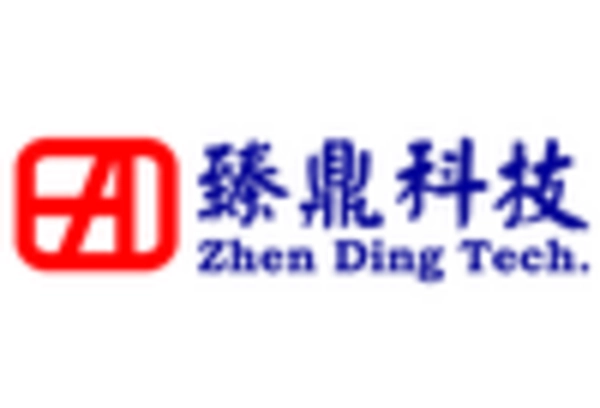Growth in Medical Device Applications
The Flexible Printed Circuit Board Market is experiencing growth driven by the increasing adoption of flexible circuits in medical devices. The healthcare sector is increasingly relying on advanced technologies for diagnostics and treatment, leading to a heightened demand for compact and reliable electronic components. Flexible printed circuits are integral to devices such as portable monitors, imaging systems, and wearable health technology. The market for medical devices is anticipated to grow at a rate of approximately 10 percent annually, with flexible circuits playing a crucial role in enhancing device performance and patient care. This trend underscores the importance of the Flexible Printed Circuit Board Market in supporting innovations that improve healthcare outcomes.
Rising Demand in Consumer Electronics
The Flexible Printed Circuit Board Market is experiencing a surge in demand driven by the proliferation of consumer electronics. As devices become more compact and multifunctional, the need for flexible circuits that can fit into smaller spaces is paramount. In 2025, the consumer electronics sector is projected to account for a substantial share of the market, with estimates suggesting it could reach approximately 40 percent of total demand. This trend is likely to continue as manufacturers seek to enhance device performance while minimizing size and weight. The integration of flexible printed circuits allows for innovative designs and improved functionality, which is essential in a highly competitive market. As a result, the Flexible Printed Circuit Board Market is poised for significant growth, reflecting the ongoing evolution of consumer technology.
Advancements in Automotive Applications
The Flexible Printed Circuit Board Market is witnessing notable advancements in automotive applications, particularly with the rise of electric vehicles (EVs) and autonomous driving technologies. Flexible circuits are increasingly utilized in various automotive systems, including infotainment, sensor integration, and power management. The automotive sector is projected to contribute significantly to the market, with estimates indicating a growth rate of around 15 percent annually through 2025. This growth is fueled by the need for lightweight and space-efficient components that can withstand harsh environmental conditions. As automotive manufacturers continue to innovate, the demand for flexible printed circuits is expected to expand, thereby enhancing the overall functionality and efficiency of modern vehicles.
Emergence of Internet of Things (IoT) Devices
The Flexible Printed Circuit Board Market is significantly influenced by the emergence of Internet of Things (IoT) devices. As connectivity becomes increasingly vital across various sectors, the demand for flexible circuits that can support compact and efficient designs is on the rise. IoT devices, which often require miniaturized components, are projected to drive substantial growth in the flexible printed circuit market, with estimates suggesting a compound annual growth rate of around 12 percent through 2025. This growth is indicative of the broader trend towards smart technology integration in everyday applications, from home automation to industrial monitoring. The Flexible Printed Circuit Board Market is thus positioned to benefit from the expanding IoT ecosystem.
Increased Focus on Renewable Energy Solutions
The Flexible Printed Circuit Board Market is also benefiting from an increased focus on renewable energy solutions. As the world shifts towards sustainable energy sources, flexible circuits are becoming essential in solar panels, wind turbines, and energy storage systems. The renewable energy sector is expected to grow significantly, with projections indicating a compound annual growth rate of approximately 8 percent through 2025. This growth is driven by the need for efficient energy conversion and management systems, where flexible printed circuits can provide the necessary reliability and performance. The integration of flexible circuits in renewable energy applications highlights the versatility and adaptability of the Flexible Printed Circuit Board Market in meeting the demands of a changing energy landscape.

















Leave a Comment